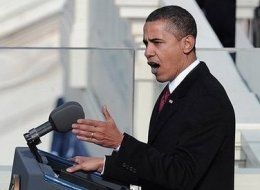Thursday, January 29, 2009
Need Case Study?
If you want to start using case studies in your marketing and business development, but aren't sure how to go about putting one together, I've just posted an article on the subject (see link in the right nav bar). Hope you find it helpful. And feel free to post comments on your case study process on this blog.
Tuesday, January 27, 2009
Got Case Study? 10 Ways to Leverage It
Case studies take time and resources to put together - why not leverage that investment for all it's worth. Here are 10 ways to leverage it:
First - as is (printed):
1. As a leave-behind on prospecting calls
2. As a show piece in your lobby area
3. As free download on your web site
4. As an extra in a direct mail package
5. As part of a follow up to a prospect inquiry.
And, with a little bit of tweaking:
1. As a web page - An expanded version as a content page on your web site, with links to other content-rich pages (a related white pager, for example)
2. As a web page - as a destination for links from your client list and/or testimonial pages
3. A shortened version as an article in your newsletter
4. Rewritten, as a press release to a trade publication
5. Re-framed, as a give-away piece for the satisfied client
I'm sure there are many more ways to leverage the case study investment - please leave a comment with your ideas!
First - as is (printed):
1. As a leave-behind on prospecting calls
2. As a show piece in your lobby area
3. As free download on your web site
4. As an extra in a direct mail package
5. As part of a follow up to a prospect inquiry.
And, with a little bit of tweaking:
1. As a web page - An expanded version as a content page on your web site, with links to other content-rich pages (a related white pager, for example)
2. As a web page - as a destination for links from your client list and/or testimonial pages
3. A shortened version as an article in your newsletter
4. Rewritten, as a press release to a trade publication
5. Re-framed, as a give-away piece for the satisfied client
I'm sure there are many more ways to leverage the case study investment - please leave a comment with your ideas!
Thursday, January 22, 2009
Lesson from the inaguration
 One of many possible business writing lessons from President Obama's inaugural speech - where tone is concerned, sometimes less is more.
One of many possible business writing lessons from President Obama's inaugural speech - where tone is concerned, sometimes less is more.In this case, the President deliberately put aside his customary high-oratory flourishes in favor of a somber, face-the-facts tone, a tone that was created as much by his word choices as his delivery. Reason - it reinforced the message contained in the content.
Similarly, business writing is usually delivered with an up-beat, can-do high-business-atory tone. Why? Like high-oratory, it's usually effective, and who doesn't like to sound up-beat and can-do?
But take a lesson from the President. Sometimes the audience doesn't want high-minded oratory, it wants to hear the unvarnished truth, and wants to hire someone who's willing to roll up their sleeves at the 5,000 foot level.
As always, know thy audience. Obama knew his.
Friday, January 16, 2009
The versatile case study

Case studies, or "customer success stories," are some of the most versatile marketing pieces there are. Once you've done the research and gotten the Opportunity, Challenge, Solution and Results down in compelling language, you've created a base from which all manner of good things can flow - in both space and time!
Space: You can repackage parts or all of the case study to add pizazz into your various marketing channels. Typically, the basic case study becomes part of your print repertoire, as a leave-behind at meetings and conferences, for example. A version of the printed version should go on your web site, but be augmented with additional testimonials, links to related case studies, and links to other related content (eg. you have a white paper on the technique you used to delight your case study client). Shorter versions can go into your newsletter, where you provide a way for readers to see the full version on the web or request the print version in the mail.
Time: You can also use pieces of the case study throughout your selling cycle. In your initial contacts (voice mail, email), you can use tidbits from the measurable results as teasers. A followup can use the shorter summaries you put in your newsletter. When the client is truly interested, send him or her the printed version with a note that an augmented version of it can be found on your web site (provide the link). Finally, when the client needs the final convincing, you'll have your set of related case studies ready to spring.
Finally, to get the most out of your case studies, spend some money to get them right:
1. Hire a professional designer - and make sure the design melds with the rest of your marketing "look and feel."
2. Hire a professional writer - it can mean the difference between what is simply an organized collection of facts, and a compelling story that pops off the page.
Putting time and money into compelling case studies is one of the most leverage-able marketing investments you can make!
Subscribe to:
Posts (Atom)